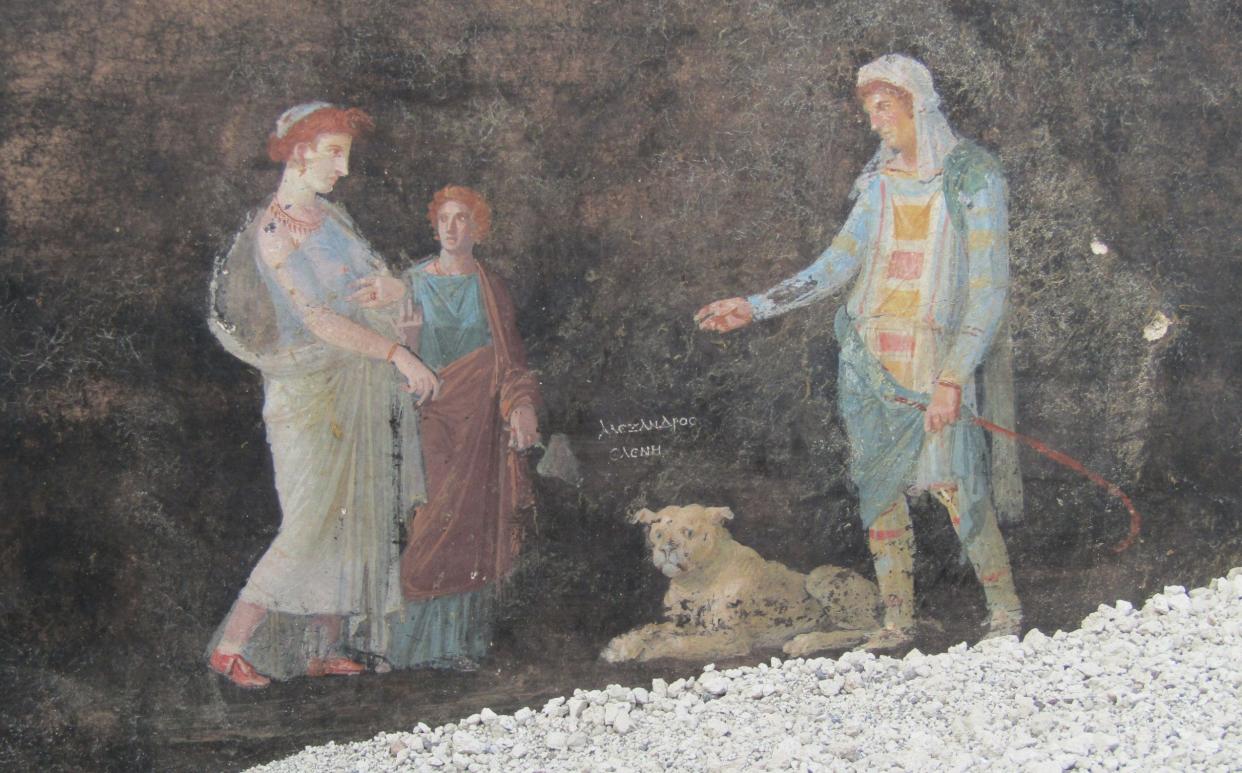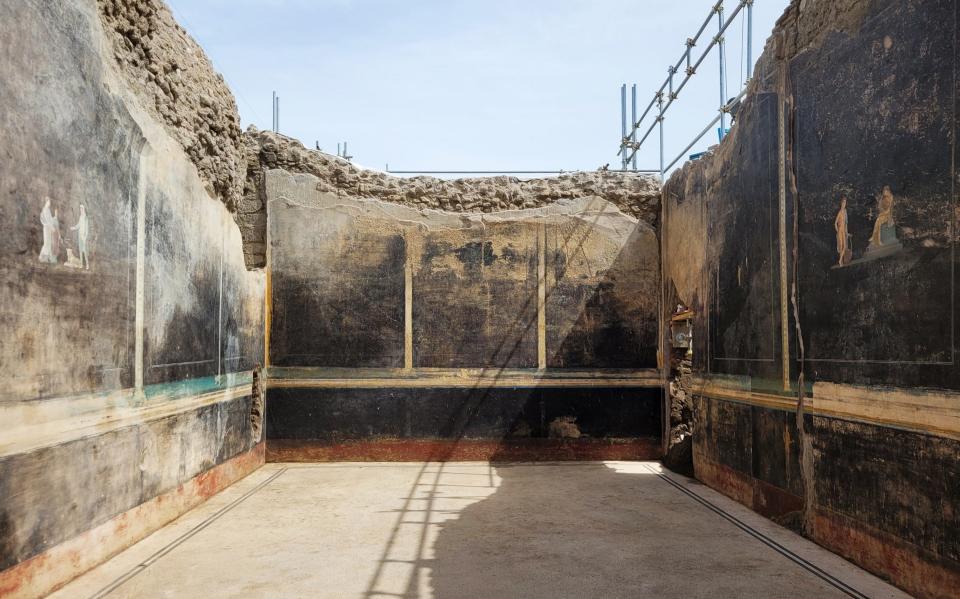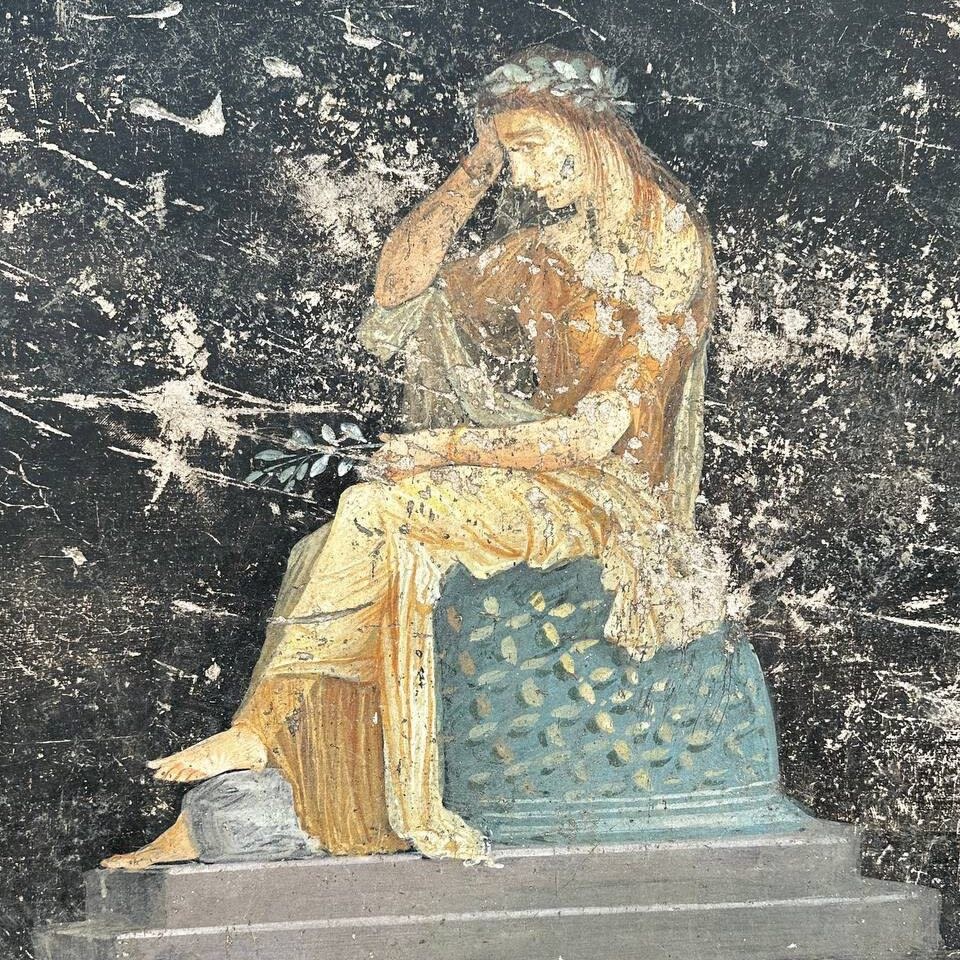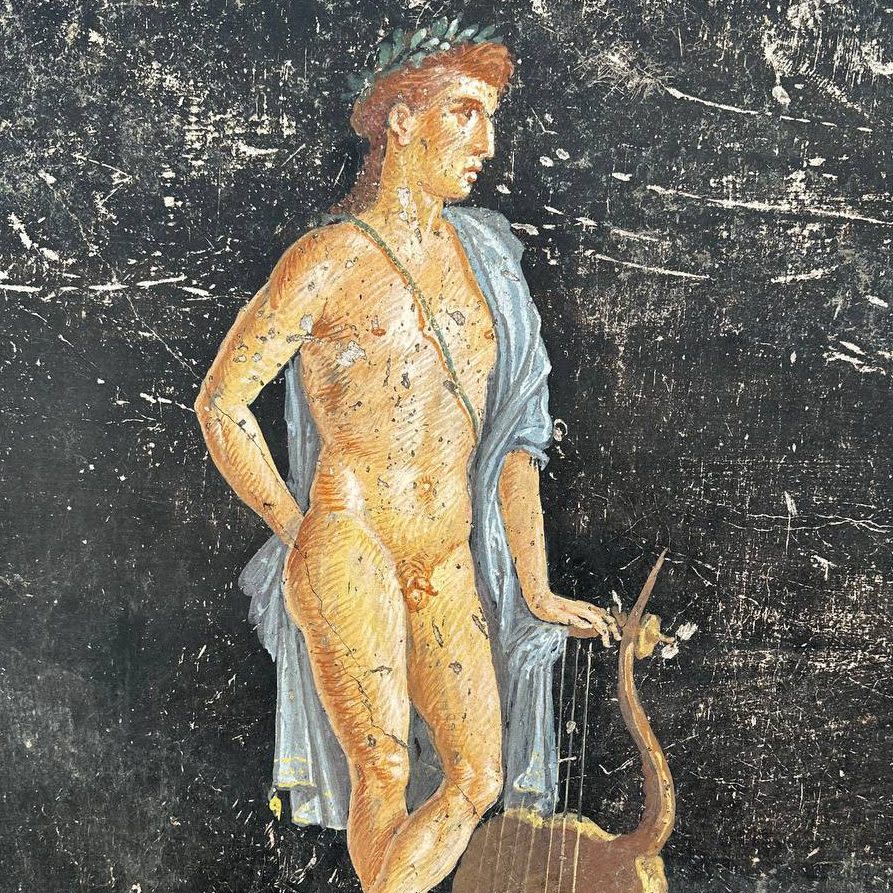Helen of Troy: Pompeii excavators unearth treasure chest of frescos

Exquisite paintings depicting Helen of Troy have been discovered by archaeologists excavating Pompeii, the latest treasures to emerge from the ancient Roman city.
The artworks adorn the walls of a large banqueting hall which has just been unearthed, nearly 2,000 years after Pompeii and Herculaneum were smothered in volcanic debris from the eruption of Mount Vesuvius in AD79.
The room also features a mostly-complete mosaic floor, made up of more than a million individual tiles.
One colourful fresco depicts prince Paris about to elope with – or perhaps abduct – Helen of Troy, the event which, according to Greek mythology, triggered the Trojan War.
A large, baleful looking mastiff stares out of the painting as Paris approaches the princess, whose beauty was legendary. Paris is identified by his other name, Alexandros, which is written in Greek.
Another image shows the God, Apollo, largely naked but with a blue cloak draped over his shoulder and leaning on a lyre, attempting to seduce Cassandra, the Trojan princess.

There is also a depiction of a famous mythological story in which Zeus, in the form of a swan, rapes the Spartan queen Leda. She became pregnant and gave birth to Helen of Troy.
The walls of the 15m-long (50ft) hall are painted black. Archaeologists believe it was designed for evening banquets and the light of candles could have flickered on the walls, highlighting the brilliantly coloured images of Gods and heroines.
The dark walls would have contrasted dramatically with the hall’s floor, which is made up of more than a million white mosaic tiles.
Gabriel Zuchtriegel, the director of the archaeological site, said: “The walls were black so that you wouldn’t see the smoke from the oil lamps.
“This was a place where people came together for evening banquets. The shimmering light made by the oil lamps would have made it look as though the paintings were moving, especially after guests had had a few glasses of good Campania wine.”

The mythical figures “speak of the relationship between individuals and their destiny: Cassandra, who can predict the future, but no one believes her; Apollo who takes the side of the Trojans against the Greek invaders but, even though he is a God, is not able to secure victory.”
The depiction of classical myths had a “social function”. Archaeologists said they would have inspired not only conversation between dinner guests but also reflections on human existence.
The banqueting hall was discovered in Regio IX – a neighbourhood of Pompeii where archaeologists launched a new excavation in February.
It has yielded some extraordinary finds, from a fresco depicting a loaf of flatbread resembling pizza to the remains of a bakery where the giant millstones were turned by slaves.
Archaeologists have also come across the tunnels that tomb raiders dug as they searched the site for precious objects in the 18th-century.

Gennaro Sangiuliano, the culture minister, said: “Pompeii really is a treasure chest that never ceases to amaze us. Every time we dig, we find something beautiful and important.”
Massimo Osanna, the director general of Italy’s museums and archaeological sites, said the “extraordinary crop” of recent discoveries was helping academics have a much better understanding of the lives of ancient Romans.
The banqueting hall was accessed by a long staircase, where experts found more remarkable discoveries including two pairs of fighting gladiators and “what appears to be an enormous, stylised phallus,” the archaeologists said.
Phallus images appear all over Pompeii and were believed to bring good fortune. The experts also found parts of a gaudily coloured ceiling fresco which depicts theatrical masks, food and Egyptian landscapes.
The banqueting hall and surrounding villa may have belonged to a wealthy Roman politician called Aulus Rustius Verus.
The initials ARV have been found on the walls of the villa.
He is believed to have used the adjacent bakery to produce bread that he then doled out for free, in an early form of vote-buying.

